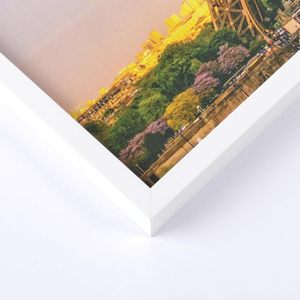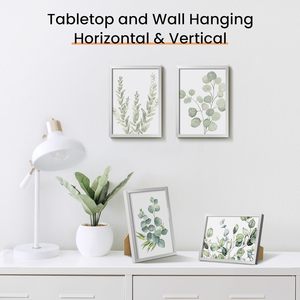
All categories
Featured selections
Trade Assurance
Buyer Central
Help Center
Get the app
Become a supplier

(69468 products available)




















































A design mirror frame is a decorative border that enhances the visual appeal of a mirror. It adds style, personality, and protection to the mirror. Here are some key points about design mirror frames:
Wooden frames
Wood is a conventional material used to make mirror frames. It is a flexible material used in various styles, ranging from rustic farmhouse mirrors to sleek and modern Scandinavian designs. Wood frame designs can include intricate carvings, inlays, or embellishments that increase their visual appeal. They are versatile, durable, and can be used in any room in the house.
Metal frames
Metal frames are made from various metals, including stainless steel, aluminum, wrought iron, and brass. These frames are strong and long-lasting and can be used in both traditional and modern interior designs. Metal frame designs can be simple and sleek or ornate and detailed, adding a touch of sophistication and drama to any space. They are easy to maintain and clean, making them ideal for high-traffic areas.
Mosaic tile frames
Mosaic tile frames are mirror frames decorated with tiny ceramic or glass tiles. These frames are often seen in bathrooms or kitchens, where the mosaic tiles complement the room's decor. Mosaic tile frames can be designed in various patterns, including geometric designs, floral motifs, or abstract designs. They add colour and texture to a room and are simple to clean and maintain.
Leather or fabric-wrapped frames
Leather or fabric-wrapped frames are designed to add luxury and comfort to a room. These frames can be wrapped in various materials, including leather, linen, silk, velvet, and suede. The material used to wrap the frame can be chosen to complement or contrast with the existing decor. These frames can be designed in various colours, including bold and vibrant hues, neutral tones, and patterned designs. They are soft and plush and add a touch of elegance and sophistication to any room.
Glass and acrylic frames
Glass and acrylic frames are modern and contemporary mirror frame designs. These frames are made from various types of glass and acrylic materials, including clear, frosted, tinted, and mirrored glass. Glass and acrylic frames can be designed in various shapes and sizes, ranging from simple and minimalist to bold and dramatic. They are lightweight and easy to handle, making them ideal for hanging on walls.
A design mirror frame is a practical and decorative element. It improves the look of a room and has many practical uses. It helps to create a more visually appealing and functionally useful space. Here are some key aspects of the functionality of mirror frames:
In conclusion, a mirror frame is more than just a pretty border around a piece of glass. It protects the mirror, makes it look better, helps with its use, and shows a person's style. Whether in an art museum or a cozy living room, mirror frames are an important part of how we see and use mirrors every day.
The mirror frame designs have many applications across industries. Different sectors use these mirrors to enhance their beauty and functionality. Some common use scenarios are as follows.
Retail industry
The retail sector uses mirror frames to display merchandise. Fashion stores use mirrors to show the reflection of customers wearing outfits. Jewelry stores use mirrors to show the sparkle of jewels. Makeup product retailers use mirrors to show the reflection of customers applying makeup. All these mirrors help customers to visualize the products better and make buying decisions.
Hospitality industry
The hotel and restaurant industry uses mirror frames to create a welcoming environment. Hotels use them in lobbies and rooms to make the space look more elegant and to provide a focal point. Restaurants use them to create an illusion of space and to make the dining experience more enjoyable. The hospitality sector may also use special function mirrors, such as in-room virtual concierge mirrors.
Healthcare industry
The healthcare sector uses mirror frames in different applications. Dental clinics use them to help patients see their teeth during treatment. Reflection mirrors help surgeons to see hard-to-reach body parts in a patient's anatomy. Eye clinics use special optical mirrors to test patients' vision. The healthcare industry has many other uses for mirrors that are not mentioned here.
Commercial buildings
Office buildings and other commercial spaces use mirror frames for a variety of purposes. They use them to enhance the aesthetics of the space and to create a sense of depth and openness. Some offices use mirrors in fitness centers to help people see their workouts. Some offices use them in security to monitor the surroundings. The mirror frames have many uses in commercial buildings.
Residential sector
The residential sector uses mirror frames for decorative and functional purposes. Homeowners use them to make rooms look more spacious and to add a decorative touch. Some common places to install mirrors are living rooms, bedrooms, bathrooms, and hallways. Mirrors also have many other functional uses in homes. For example, in beauty, to see the reflection while applying makeup, and in sports, to observe the reflection during workouts.
Picking the right mirror frame is often an overlooked but essential part of mirror selection. It's crucial for improving a room's overall look. A stylish mirror frame can transform a practical piece into a stunning focal point that ties the room together. To ensure that a mirror frame matches a room, consider the following:
Style of the room
It's important to consider the overall decor when choosing a mirror frame. A sleek metal frame would fit well in a modern room with clean lines and minimalism, whereas an ornate, carved frame would blend better in a traditional space. Coastal rooms benefit from mirrors with frames that mimic weathered wood or sea shell elements, while eclectic spaces can accommodate frames in bright colors or mixed materials.
Proportions and dimensions
First, it's necessary to measure the space where the mirror will be placed to ensure the right size is chosen. The frame should be in proportion to the surrounding furniture and wall space. For a balanced look, the frame should be of a similar scale to the items nearby. Also, the frame's shape should complement the mirror's design. For example, a rectangular frame often pairs well with vertical or horizontal mirrors, while round frames suit more circular mirrors.
Material and quality
It's crucial to choose a durable frame that will last. Wood frames offer classic beauty and sturdiness, metal frames provide an industrial edge and strength, and plastic or composite frames can be lightweight and budget-friendly. The material used to make the frame also affects its appearance and longevity, so it's important to consider quality and how it will impact the mirror's lifespan.
Purpose and placement
The area where the mirror is placed has a significant impact on the choice of frame. If the mirror is used for decorative purposes, a flashy frame that stands out may be suitable. However, if it's used in functional spaces like bathrooms or entryways, the focus should be on practicality and matching elements like lighting or furniture.
Personal preference
Ultimately, the mirror frame should reflect the user's style. Do they prefer sleek and modern designs or rustic and vintage ones? Are they inclined towards bold statements or subtle accents? The answers to these questions will guide them toward a frame that resonates with their personality.
Q1. What are the popular mirror frame designs and trends?
A1. Minimalist designs, nature-inspired elements, geometric shapes, vintage looks, and multifunctional mirrors are trending.
Q2. What materials are commonly used for mirror frames?
A2. Wood, metal, plastic, and glass are popular frame materials.
Q3. How can mirror frames be customized?
A3. They can be customized in terms of size, shape, material, color, and design to match specific preferences.
Q4. What styles of mirror frames are available?
A4. There are various styles like modern, classic, rustic, and eclectic to suit different interior themes.
Q5. Are mirror frame designs eco-friendly?
A5. Suppliers now make eco-friendly frames using recycled materials and sustainable practices.